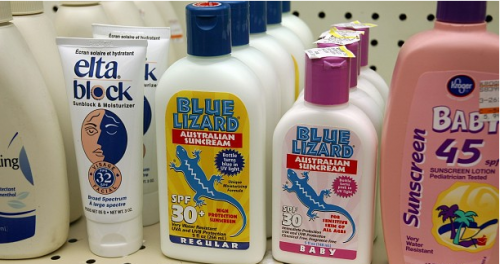When slathering the SPF, don't forget your face and neck

As the sun (finally) begins to shine again, plans start to form for the outdoor activities that require use of hats, shades and SPF to avoid the pain and damage caused by sunburn.
However, University of Cincinnati (UC) Cancer Institute melanoma experts remind you during Melanoma Awareness Month that it's important to pay attention to all areas of your body when slathering on sunscreen, including your face.
"The face, head and neck are very common areas for melanoma to appear, although melanoma can form on any part of the body," says the UC Cancer Institute's Jeffrey Sussman, MD, professor and surgical oncology division chief at the UC College of Medicine and UC Health surgical oncologist.
He says these are areas are most readily exposed to sunlight and can be forgotten or overlooked when applying sunscreen.
"Melanoma, the most deadly form of skin cancer, is the fifth most common type of new cancer diagnosis in American men and the sixth most common type in American women, although cases are increasing in young women because of tanning bed and recreational sun exposure," Sussman says. "It's important to remember that people of all races can develop melanoma, and even though some makeup has sunblock in it, it's usually not enough to stop burning or sun damage if you're going to be outside for long periods of time."
Sussman says to also be sure to wear hats to avoid sun damage to your scalp and to always be on the lookout for a change in skin lesions or moles for early detection of melanoma.
However, it's important to pay close attention to all lumps and bumps on the skin.
"It is true that, most commonly, melanoma presents as a dark, irregular, uneven or changing mole," says UC Cancer Institute expert Adam Ingraffea, MD, a clinical assistant professor and associate program director in UC's department of dermatology and a UC Health dermatologist. "However, there are rare cases when it has the same color as the skin and the only clues may be the fact that it is a new or growing bump on the skin. Sometimes, it will be itchy or painful. These melanomas which are called amelanotic, meaning they have no dark pigment in them, are the most difficult for patients and clinicians to identify."
Sussman adds that while prevention is your best bet in avoiding melanoma, early treatment is better than waiting.
"If you do notice a change in a skin lesion or mole or just notice a suspicious area on the skin, please schedule an appointment with a dermatologist to have it examined," he says, adding that it's not a bad idea to get yearly skin checks so that an expert can inspect any possible pre-cancerous areas. "Although there are other risk factors for melanoma, including a family history, exposure to ultraviolet rays are high on the list. Be sure to get in the habit of applying sunscreen to all parts of your body—including your face, ears and neck—for better outcomes."

















